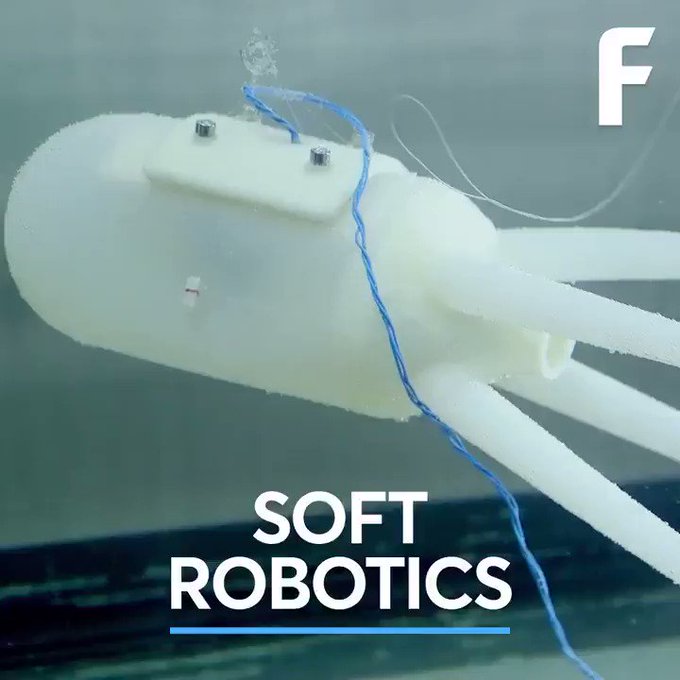Features of Flexible Soft Robots That Imitate Water Creatures

Scientists have started demonstrating how new sets of robots will be built. The new robots will be entirely different from the already demonstrated ones.
There will be a quick shift of attention in the making of the rigid types of robots made with metals to another set made with soft and flexible materials. A video made by futurism revealed how the engineers intend to achieve this new idea.
Flexible robots can make use of leather, plastics, or rubber material as their major parts for mobility.
The samples released in the video illustrate robots made with thick and highly dense flexible materials. The idea behind such is to mimic the water creatures known to make use of flexible parts as such can make the robots move in water unnoticed by the aquatic creatures.
Besides, a simple test conducted with such robots showed that their body is unbreakable even when car tires accidentally climb them. The elastic property of the robot’s body makes it impossible to be broken under intense vibrations.
The engineers behind the new move believe the use of flexible components could improve the making of humanoids’ fingers, necks, toes, etc. An idea believed to be the future of robotic engineering.
Rubber, leather, and plastic-related materials are currently undergoing intense experiments to access how perfect they can operate and be used in the making of future AI robots.
The idea will be to help such robots become lighter and easier to operate since most parts made with metals can be replaced with such material.
The sample robots made with such material seems to have few engine parts because the use of rope or string can control the remaining parts of the robot reducing the need for the inclusion of extra metallic part.
Hence, it made them simpler, and more flexible yet unbreakable. Above all, it offered lighter weight to the robots which help in reducing the size of engines needed to move the parts of the robots leading to a total reduction in the cost of their production.
The lightweight offered in such robots enables them to swim inside the water down at any depth effectively. Their control while inside water may not be noticed by fishes and dangerous aquatic lives.
The future of #robots just might be soft #robotics! #AI #ArtificialIntelligence #ml #dl #machinelearning #IoT #IIoT #futureofwork #automation @futurism via @MikeQuindazzi cc @Ronald_vanLoon @KirkDBorne @MarshaCollier @IIoT_World @KimWhitler pic.twitter.com/ntq1isXdAS
— Rimah Harb (@HarbRimah) September 13, 2018
